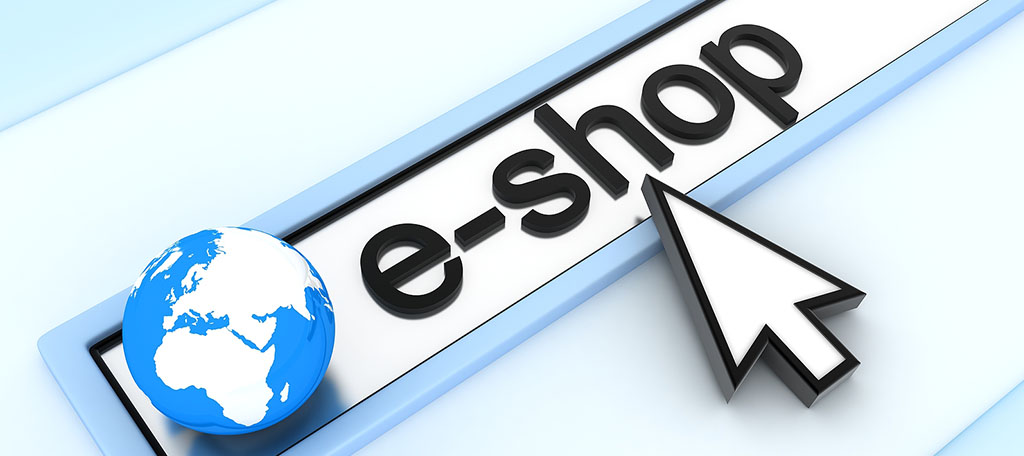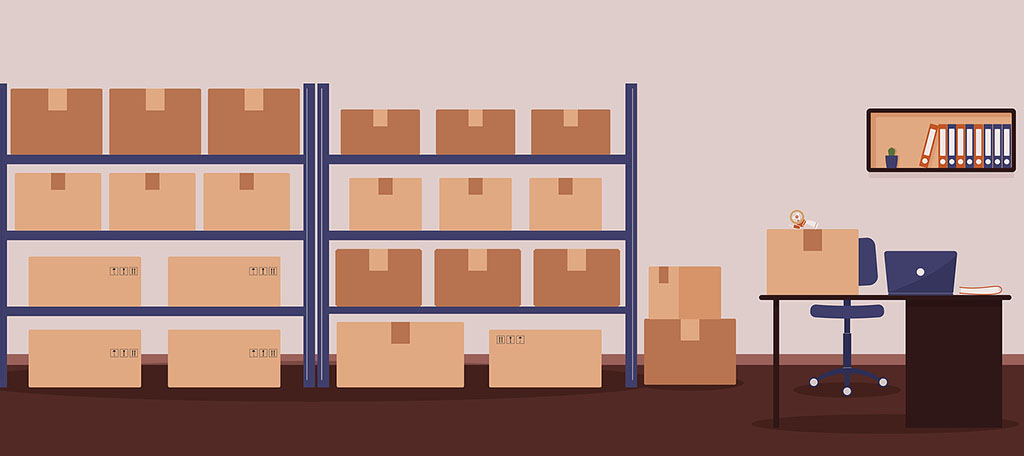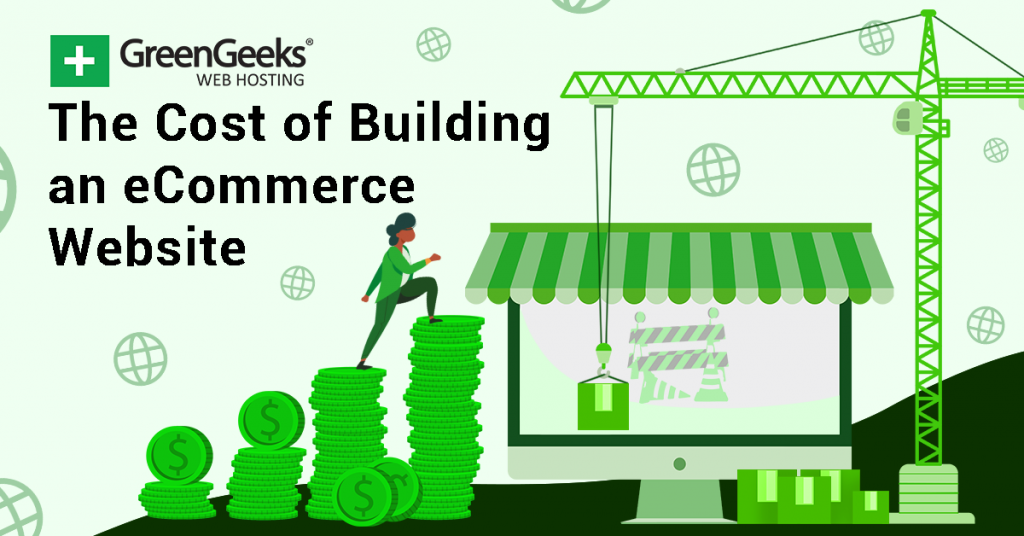If you’re planning to build a website of any type, trying to figure out the exact price is quite a difficult prospect. And trying to figure out how much an eCommerce website will cost is even tougher because what you might need depends greatly on the scale of the site.
Not to mention the products you actually have to buy to sell to customers. Thus, it might not be possible to get an exact figure. But the good news is that we can get pretty close to the actual cost.
Today, I am going to cover the cost breakdown of building an eCommerce website.
What Do I Need to Build An eCommerce Site?
Before we can calculate the cost of building an eCommerce website, we need to figure out what goes into one. Regardless of the type of website you are building, they all share common parts, which include:
- Web Hosting
- Themes
- Plugins
So the real question is how does an eCommerce site differ from a normal one?
The first main difference is the sheer number of plugins you will need to make an eCommerce site. Building a blog doesn’t take much, but a fully-fledged eCommerce site does, and picking free options isn’t always an option.
Without a doubt, you are going to need WooCommerce. You are also very likely to purchase multiple extensions for it that can help increase business. You might also need other things like live chat support, email subscription, and other plugins.
The good news is that the price of themes stays pretty much the same, and both free and premium versions are on the table.
However, there are some unique costs to doing eCommerce that we must figure out.
For starters, you are selling goods, which immediately adds two costs that are hard to pinpoint: transaction fees and shipping. A transaction fee depends on the payment gateway (PayPal, Stripe, etc.) you use.
The good news is that this comes out of the purchase but can range from 1-3% of the total acquisition.
Shipping is far more complicated and dependent on what you are selling. For instance, shipping a mattress is very different than shipping a book. We will cover this in greater detail below.
The main cost of starting an online shop is actually filling it with products. If you choose to sell hardware equipment, you need to buy that equipment from a distributor, store it, then sell it on your website.
We will examine all of this before looking at the price, although feel free to scroll down to the chart to see the cost breakdown.
Are Free Tools An Option?

In many instances, free tools are absolutely an option, especially for a brand new store. This can help lower the cost of building an eCommerce website.
For instance, you are going to want to send customers weekly store updates in a newsletter format. While email marketing can get pricey, it’s also free when you are starting out, at least for the most part.
That said, sometimes picking the free option can come back to hurt you.
For instance, while we will be using WordPress and WooCommerce, other eCommerce platforms may charge an additional transaction fee, or higher fees, depending on the plan you choose. It can easily cut into profits.
Typically, the cheaper the plan, the more you are going to pay in fees.
I’ll try to mention the availability of free options whenever possible, but sometimes saving a few bucks can cost you more in the long run.
Web Hosting
Web hosting is a cost that every website shares, but this has resulted in it being pretty affordable.
A web hosting company is responsible for renting out server space for your website and maintaining that server. Websites are active 24/7, thus maintenance is important. The quality of the server also dictates your website’s performance.
As a result, web hosting is one of the most important choices you need to make as an online store owner.
Luckily for you, the web hosting industry is extremely competitive with a ton of options to choose from. That said, you need to make sure the quality of your web host matches what customers expect from an online shop.
Here at GreenGeeks, we offer customers affordable rates, an environmental commitment, and most importantly, the best hosting services in the industry.
Now I know what you’re thinking, what does it actually cost?
In most cases, web hosting services cost less than a single coffee for a month. The issue is that every plan is different because they offer different amounts of server space, support, and other factors.
Thus, pinpointing a price isn’t easy.
Refer to the table to see a range of prices from the cheapest to the most expensive for a new online store.
Domain Name

The domain name is the name of your website or your website’s URL.
Many may take this for granted, but sometimes getting the correct domain name can get pricey. For example, if you own a physical store, you probably want your domain name to be “YourStoreName.com,” But, what if it’s taken?
Well, you have a few options. You can change the extension “.com” to “.net” or something else. Try to buy the domain name from another owner. Or, pick a new name that is available and relevant to your store.
In most cases, picking something else is recommended.
This is because buying out a particular domain name that is taken can cost thousands of dollars. In fact, many individuals buy out domain names in the hope they can sell them for ridiculous sums.
Changing to a “.net” for an eCommerce store is not recommended. The “.com” extension means that your website is a commercial one, which is what an eCommerce site is. While some may find success this way, I don’t recommend it.
The good news is if you are picking a unique domain name, it’s actually pretty cheap. In fact, at GreenGeeks, it’s free! You get a free domain name for the first year. After that, you just need to pay a small fee each year to keep it.
Themes
A WordPress theme is a collection of style sheets that dictates the appearance of your website.
Every website needs a theme, and to be clear, only one theme. Luckily, themes come in both free and premium options. The main difference is the level of support you can expect to receive and how many options you have available to you.
So the real question is, should I use a free or premium theme?
Well, to be honest, it depends on you. If you are brand new to web development, the extra support a premium theme offers is well worth the cost. Premium themes typically come with templates, which can dramatically speed up the design process.
In some cases, you may only need to do a few minor edits and add your own content before it’s ready to go.
Free themes are a great option and can save you a few bucks. That said, you typically need to do some extra work to get them looking as good as premium layouts. It’s not hard, but for beginners, it can prove time-consuming.
The good news is that premium themes are not that expensive. Typically, this will only set you back around $50. Some are more expensive and some are cheaper, but they are a one-time purchase.
This won’t have a huge impact on the final price, though.
Plugins
Plugins are small pieces of software that add specific features to your website. They’re basically like apps for your smartphone.
They are the primary reason you can build a stunning WordPress website without ever writing a single line of code. Luckily, just like themes, there are free and premium versions available.
Since you are building an eCommerce store, you will need the WooCommerce plugin, which will cost you nothing. It allows you to build an online store in mere moments. While it is free, most developers that are serious purchase some of the add-ons it offers.
For instance, there is a premium add-on that improves the cart feature to show recommended items. This can dramatically increase sales. And there is a lot of other useful add ons that range from $30 to $100.
In general, premium plugins exist around that price point. Odds are you will want to stick with the free versions of plugins and slowly upgrade to premium as your site grows.
This will help lower your initial costs, but sometimes free is not a viable option.
Transaction Fees

A transaction fee is a fee that occurs every time a purchase is made using a payment gateway.
Unlike everything else on this list, a transaction fee is not an initial cost, but it is something you need to consider because you will need to pay it on every purchase. The fee is determined by the payment gateway you use and is subject to change.
This can heavily influence the pricing of products in your store. Especially if the profit margins are extremely small. For example, if you only make a 2% profit, you would end up losing money due to the transaction fee.
I will not be including transaction fees in the grand total because you do not have to actually pay anything until a sale is made. Additionally, every payment processing system is different, so the fees are subject to vary quite a bit in some cases.
That said, this is something that will affect your business and you need to keep them in mind.
Buying Stock
Without a doubt, the real cost of opening an online store is buying the products you are going to sell.
The problem here is that every store sells different products. One store might sell T-shirts, while another might be focusing on video games. The prices are going to be different.
This is also where a lot of new online stores fail. They simply buy too many products for a store with zero visitors. It’s highly recommended to buy conservatively to lower the initial cost.
The worst thing that can happen is that you run out of stock.
Now it’s also worth mentioning that this point could be null for a variety of reasons. For instance, if you run a small business with a physical location. You probably already own the stock and are looking to cash in with online sales.
You could also be running a dropshipping business model. This is where the store purchases products from a distributor after they have made a sale. The distributor is responsible for storing and shipping the product. You are the middle man in this scenario.
It’s impossible to estimate the costs without more information on a specific business type.
Storage

Storage is another problematic factor to consider that has a lot of variables.
Let’s face it, if you are purchasing products to sell for your eCommerce site, you need to actually store those products until they are sold. Pretty basic stuff, but this can be really expensive if you have a large online store.
In some cases, you might need a warehouse to manage it. In other cases, you might just need a spare room in a house or apartment.
And similarly to buying the stock, this could already be taken care of.
If you own a physical location for your business, well, your storage is right there. It’s still a cost, but not specifically for your online store. It’s for the business in general.
Dropshipping businesses also do not face this problem. Instead, the distributor is in charge of storing the product.
Shipping
The main component of selling products online is shipping the product to the customer after a sale.
This means you are going to need boxes, tape, protective materials (bubble wrap, etc.), and most importantly, paying postal fees. Shipping is a real cost and will deeply cut into the profits, which is why smaller businesses cannot offer free shipping.
Of course, some stores will just bake the shipping into the price and advertise free shipping.
Even if you are using dropshipping, you are still usually responsible for paying delivery costs. This can be in the form of a fee. In some cases, the price already includes the shipping.
What’s worse is that shipping prices are subject to change. For consideration, they have been increasing steadily throughout the pandemic.
Marketing
Even if you have everything else in place and your website is online and ready to go, you still need customers.
Welcome to marketing.
There are a thousand different ways to go about marketing, and the vast majority of them are actually free. This includes things like social media marketing, using Google My Business (physical location required), free advertisement credits (Facebook, Google Ads, etc.), and more.
You can also go the paid route and purchase ad space. Marketing is extremely important when starting out because you need to get a customer base or your store won’t do anything.
The Cost of Building an eCommerce Website
| Store Component | Required? | Price | Details |
|---|---|---|---|
| WordPress Software | ✔️ | $0 | WordPress software is completely free to use on its own. |
| Web Hosting | ✔️ | $2.49 – $8.95 per month or $106.20 -$322.20 for three years | Web hosting is a necessary part of all WordPress.org websites. While most offer a monthly breakdown of the cost, very few actually accept monthly payments. Thus, you are going to pay for one to five years upfront. In GreenGeek’s case, you are paying for 3 years of web hosting. |
| Plugins | ✔️ | $0-$300 | In most cases, websites will start off with free versions of plugins. That said, you might end up purchasing a few premium plugins to add some of the expected features from the get-go. |
| Themes | ✔️ | $0-$50 | Themes have free and premium options to choose from. A stylish premium theme can go a long way and not break the budget. |
| Stock | ✔️ | $0-$1000+ | If you run a dropshipping business, you do not pay for products until a sale is made, thus you actually spend $0. If not, the price can be just about anything, but typically over $1,000. |
| Storage | ✔️ | $0-$1000+ | Dropshipping businesses will not have any storage costs. Instead, this is on the distributor. However, renting out actual space to store products can be expensive. It’s also possible to already have the space. |
| Shipping | ✔️ | $100-$300+ | This really depends on the volume of sales you make. Small online stores can easily spend over $300 a month, while larger ones can spend thousands. |
| Marketing | ✔️ | $0-$500+ | It’s entirely possible to only utilize free marketing tools and you can find a lot of success doing so. That said, the typical business will spend somewhere between 5-15% on marketing. |
| Total | $206.20 -$3,472.2 | Building an online store isn’t that hard, but there’s a lot of variables when it comes to price. However, this price range should reflect the average cost of building an eCommerce website. |
Starting an online store is a big undertaking, that’s why figuring out the true cost of building an eCommerce website is challenging.
That said, with some general estimates, you will most likely spend under a thousand dollars if you are using a dropshipping business model.
The Returns Can Be Many Times Over
There’s no denying that starting an online business is risky. You are competing with very established brands and unless you have a dedicated following, it has a high failure rate. But if it works, you are looking at some real profits.
While it may cost more in some cases to start your eCommerce website, it’s often well worth the cost.
Did we miss any factors to consider? Care to share what the cost of building your eCommerce site was?

